A Peek Inside My Reading Journal
An overview of what I track, how I track it, and how my tracking also serves as a fun creative outlet!
Whether an app, spreadsheet, or a simple list in a computer document, having a digital, easily-searchable way to track your reading can prove very useful. But I also love the creative outlet of a handwritten, drawn-in journal to document my reading life. Periodically pulling out the markers and crayons just seems to make my inner second-grader happy!
I’ve shared a few photos of my reading journal recently and have gotten a number of questions about what I track and how I track it. So today, I thought I’d take you inside my zero-tech, highly-customized, creative-outlet reading journal and show you around a bit. I’ll provide an overview today, which will hopefully give you ideas if you want to start or expand your own reading journal. This weekend, paid subscribers will also receive an even more detailed look inside with additional photos and specifics on the different sections, spreads, and lists within my reading journal.
A Bit of Background
I’ve been tracking my reading for decades at this point. I have a few different methods, but the one I use the most - and that is by far the most fun and creative for me - is my reading journal. For the last six years or so, I have used an Archer & Olive brand journal for this purpose, and I typically go through one journal every two years.
The overall purpose of my reading journal is twofold: a functional record of what I read and my initial thoughts about it, and a creative outlet combining two of my favorite hobbies (reading and journaling). I love how this process has helped me refine my reading tastes, made me aware of gaps in my reading, and allowed me to express my thoughts about a book in a way that’s just for me. (Well, except for the photos and details I’m sharing here and in this weekend’s article, I guess! But I feel I’m among bookish friends here.) :-)
Each year I seem to expand the journal a bit more, adding a category here or a new detail to track there. It’s completely versatile and since the journal is made up of blank pages (vs pre-printed pages of a purchased planner or book journal), I can change it up any time, however I want. It does take some time creating and filling in these pages, yes, but it’s time reflecting on what I’ve read and enjoying a creative outlet - time very well spent, in my view.
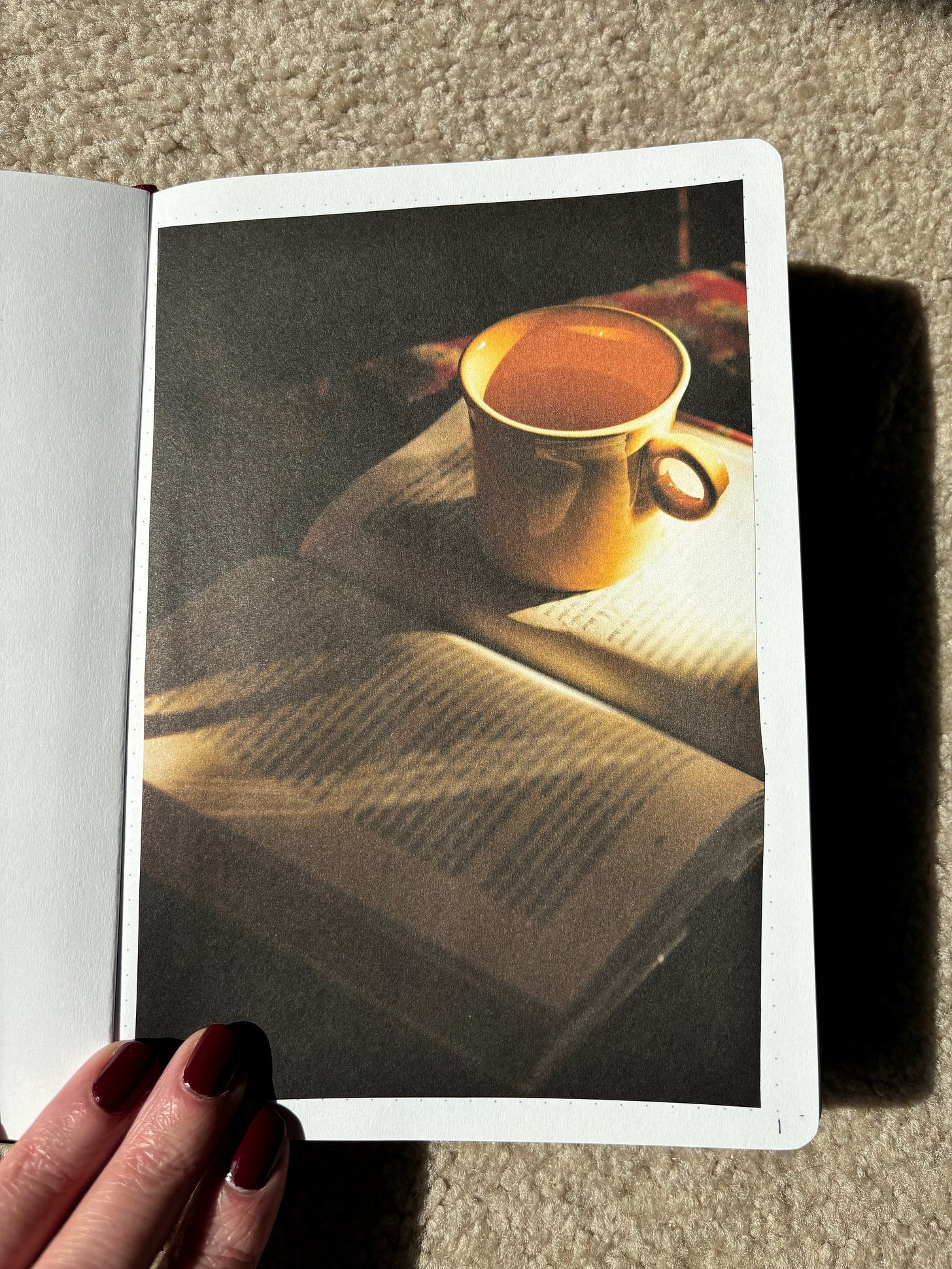
What I Track
Like I mentioned, I refine and change what I track over time, but here are some of the main categories in my current reading journal:
* All-Time Favorites *
At the front, I keep lists of my favorites that have stood the test of time. Categories here include all-time favorite fiction books, nonfiction books, authors, and series. While I will probably curl up into a ball of indecision if you ask me to name my #1 favorite book of all time, I could answer my top dozen or so with a bit more ease! I’ll include photos of some of these pages in that upcoming article if you’re curious what has made my all-time faves lists.
In this section, I also have pages for my top ten fiction and top ten nonfiction of the past several years. It’s fun to peek at these from time to time and realize how I can instantly be taken back to a specific point when I was reading a particular book. We were in the throes of the pandemic when I read and thoroughly enjoyed The Lager Queen of Minnesota by J. Ryan Stradal in 2020, for example, and I was so excited about Nedra Glover Tawwab’s Set Boundaries, Find Peace in 2021 that I immediately held a discussion group on it with one of the coaching groups I lead. Does anyone else feel like a book can be an instant teleporting device to another point in time?!
* Prize and Reading Lists *
Most of this section is fairly new, although one particular list has traveled with me since 2018 or so. In general, this is where I make note of book prize contenders and various must-read lists that pique my interest. Periodically this will include some Booker and Pulitzer nominees and, more recently, the fairly new Carol Shields prize. But my favorite prize to follow is the Women’s Prize for Fiction - and now, the Women’s Prize for Nonfiction, which just kicked off in 2024. Nearly every year since I’ve followed the Women’s Prize, I’ve found at least one of my top ten reads of the year from it - and often books I’d likely never have heard about otherwise. Examples in recent years include The Island of Missing Trees by Elif Shafak, Wandering Souls by Cecile Pin, and Demon Copperhead by Barbara Kingsolver, to name a few.
Even if I don’t read them in the year they were nominated, I love having the list to refer back to and read from in future years. It’s kind of like when a trusted reader friend raves about a book and you definitely want to check it out, but you, like me, might be a mood reader who also already has 27 books checked out of the library and are unable to read it right then. I like knowing where to look for those trusted recs.
* TBR *
Speaking of recommendations, I have a spread for my TBR - or To Be Read - list here as well. I have also gotten better at noting who recommended the book to me, whether that’s a friend or family member, a favorite bookish podcast, a book club member, or someone else.
My next level to aspire to here is something I recently heard on one of those aforementioned bookish podcasts: Tracking the ratings of those books to the recommendation source, so I can see where my consistently highly-rated books tend to come from. I have a gut-level sense of this, but it would be cool to track, too.
* Bookstores, Bookish Organizations, and Literacy Work *
When I travel, one of my favorite things to do is seek out a local bookstore(s) in the area. In this section of my reading journal, I track independent bookshops I hear about (I will meet you someday, Strand! You too, Parnassus!) as well as record ones I actually visit (what a treat to spend some time with you last fall, Birchbark Books!).
A fair amount of my volunteer service and giving is dedicated to literacy, reading, and book-related topics and organizations. Whenever I hear of a new-to-me literacy organization, I jot it down in this spread. (A big thank you to the fantastic organizations doing incredible work in literacy, reading, and getting books in the hands of people who might not otherwise easily access them!)
So there’s a good look into the opening section of my reading journal! Now let’s move on to what I track for individual books.
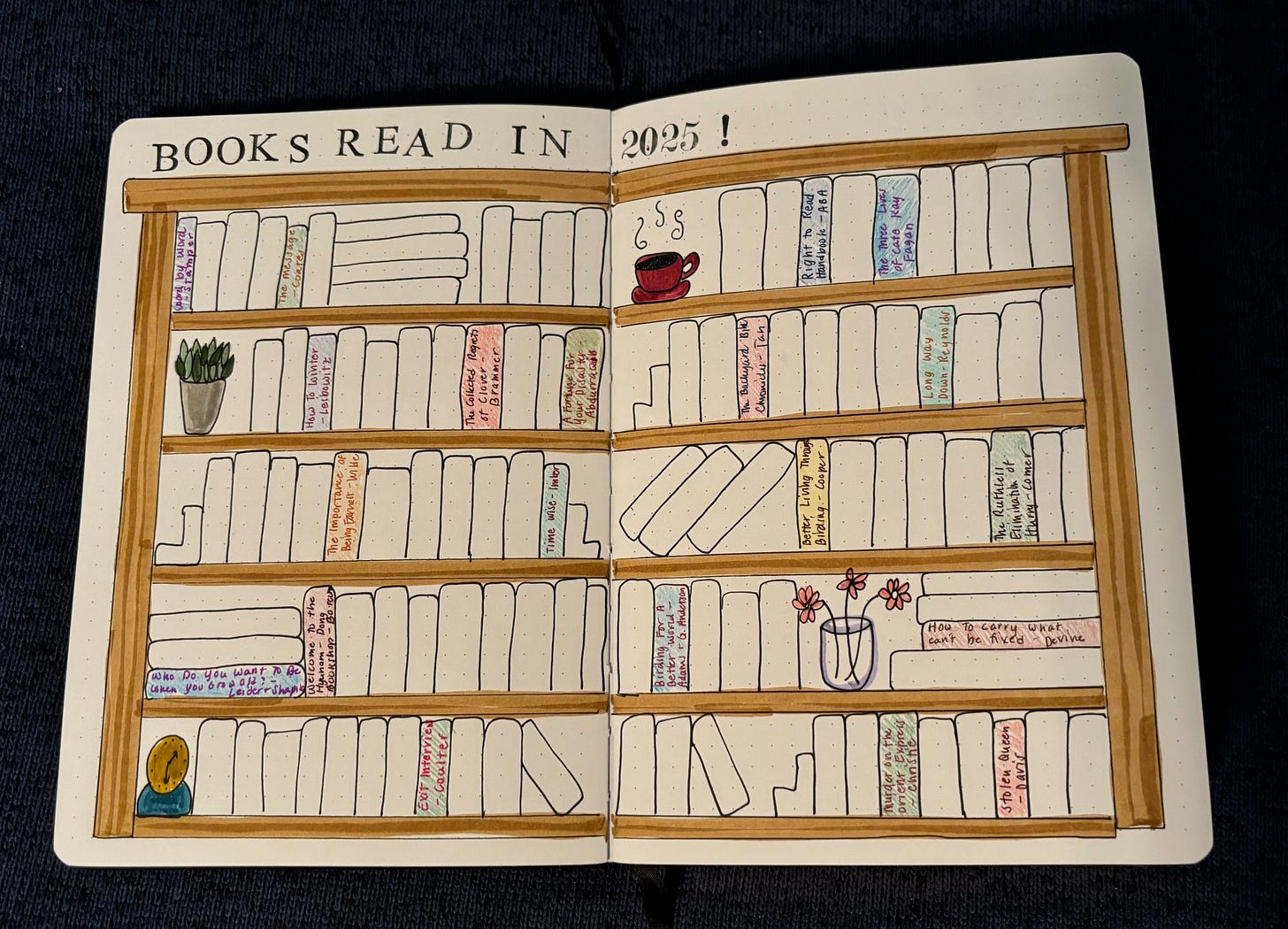
Reading Details
The bulk of my reading journal is dedicated to recording what I read and my immediate thoughts on it. This section starts with my at-a-glance bookshelf, like the 2025 one pictured above. I love the colorful view as well as the delight in seeing the bookshelf ‘fill up’ as the year progresses.
I don’t set a number goal for how many books I want to read in a year, and I honestly couldn’t tell you how many blank books I’ve drawn in this particular picture; I typically read around 100 each year, so I try to allow space for about that many books. Last year, however, I read quite a bit more than usual and ended up drawing additional books at the top and squeezing them into random places. But again, I didn’t count or place any expectation on myself, so in this weekend’s article you’ll see there are some blank ones even at the end of the year. That is totally fine with me.
And by the way, I don’t consider reading a competitive sport, nor do I believe there is any moral application or status associated with the amount of books we read. Whether you read three books or three hundred books in the span of a year, you’re a reader. Full stop.
* Index *
After the at-a-glance bookshelf, my next section is my index for all the pages to follow. Here, I include four columns: Book title, author, star rating, and journal page where I can find my written thoughts. Like the table of contents in a highly-referenced book, this provides a useful overview of the basics so I can easily find what I need.
One neat side benefit of this that I hadn’t anticipated is that, with the star ratings right there, I can see any patterns in my reading enjoyment. Sometimes I’ll notice I’ve had three five-star books in a row - a cause to celebrate! :-) And sometimes I’ll notice I’ve had a string of two- and three-star books in a row, which is fine - not every book needs to be a five-star read - but it can also signal that I may want to pick up one by a favorite author or part of a series that I’m already loving, because I’ve found that too many lower ratings in a row can lead to a reading slump.
In the last few years, I’ve also included a page for DNFs - or Did Not Finish books - just after the index. I didn’t previously keep track of these (who wants to revisit a dud?) but it’s actually proven incredibly useful! In this section, I simply note the title and author, what page (or percentage, if audiobook) I reached, and a brief reason why I’m DNF’ing. If it’s a ‘soft DNF’ - as in, a book I think I’ll actually enjoy, it’s just not the right time (#moodreaderproblems) - I’ll note that, too. Last year I did go back to two books I had soft DNF’d, picked up where I had left off, and ended up enjoying them both! So I’m glad I make note of this now.
* Stats *
One of my least favorite classes in college has become one of my most favorite spreads in my reading journal: Stats!
I track a variety of details which we’ll get to in a moment, but I have a spread specifically for Monthly Stats that I update - you guessed it - monthly. Here’s what I currently track on this spread for each month:
Total number of books read that month
How many were on paper, audio, or both (ebook is very rare for me, but I write it in when it occurs)
How many fiction
My favorite fiction of the month
How many nonfiction
My favorite nonfiction of the month
Now, interestingly, you might think at the end of the year I simply look at this spread and pull my Top 10 Nonfiction and Top 10 Fiction lists from here. That is not actually the case; in fact, last year, out of my 24 or so listed as favorites on the Monthly Stats page, only 12 made it into my favorites of the year - a cool stat in and of itself! This is for a variety of reasons, including how a book may be my favorite in that month but it doesn’t stick with me over time, therefore it likely won’t make my favorites of the year list. (If you ever want me to detail how I do choose what makes a favorite, let me know - that could start a really interesting discussion!)
* Individual ‘Book Reports’ *
Upon finishing a book, here’s the section I turn to - and also the section where I tend to spend the most time. I start by recording some basic information about each book:
Title
Author
My star rating
Publication year
Number of pages
Fiction (F) or Nonfiction (NF)
Genre
Date I started and date I finished reading
If audiobook, I also include the length
Depending on the book, there may be some additional details, too. For example, if it’s a translated book, I’ll include the translator’s name as well as its original published language. And I’m trying to be more diligent about recording audiobook narrator names, especially when I am thoroughly impressed with the quality of their narration.
After those details, it’s mini-book-report time! Here’s where I write whatever I want to remember about the book: What I thought, how I felt while reading it, surprises, facts, plot points, why I loved/disliked/felt in-between about it, and so on. I’ll also frequently include a quote or two from the book here as well.
One related note: If I’ve tabbed and highlighted a bunch in a book, I only give it a couple of sentences here - then write the rest in my study book. That was definitely the case with Robin Wall Kimmerer’s The Serviceberry, pictured above. It is such a tiny book that is packed with wisdom and insight, so I wrote a few sentences in my reading journal and literally a few pages in my study book. To denote this, on my index page, I’ll put an asterisk (*) next to the title which signals to me that more can be found in my study book.
The Serviceberry is our May book club pick, by the way - which you are welcome to join at any time!
Fun! Creative! Delightful!
So there’s a peek inside my reading journal! I hope it gives you some ideas for creating or expanding on your own book tracking in some way. And the additional details and photos (if you can believe there’s more!) will come to the inboxes of paid subscribers this weekend, so feel free to upgrade if you’d like even more detail.
One more bit of explanation before we wrap up: I imagine some of you might be thinking, why bother with all of this? Why not put the info into an online platform and be done with it?
Fair questions! And my answer is basically the heading title above: it’s very fun, a wonderful creative outlet (that I often do with other creative and crafty people, too), and I find it to be a delightful way to step away from the stressors of life for a moment and indulge in some of my favorite hobbies. Also, I spend a good portion of my days on a screen, and I really love hobbies, activities, and even tracking that allow me to close my phone away in a drawer and just revel in the moment a bit.
And I may be in the minority with this type of reading journal, but I find great satisfaction in flipping through these journals from time to time, reflecting on books I’ve read, seeing patterns and life phases showing up throughout the pages, and gaining even more inspiration for my next reading or writing project.
In sum, it honors my values and brings me joy, and that’s enough for me. :-)
I’d love to hear how you track your reading! Do you keep a journal of some sort? Is there an online platform you absolutely love? Are there other details you track that help you grow as a reader? Please share any and all ideas, tips, and questions below!
Christi Hegstad, PhD, PCC, and self-proclaimed book nerd, is a certified coach who helps achievers work with meaning, live with purpose, and reach bold + difference-making goals. Feel free to share your questions, comments, or topic/book suggestions below or via email to readingandpurpose (at) gmail (dot) com. Thank you for being here!


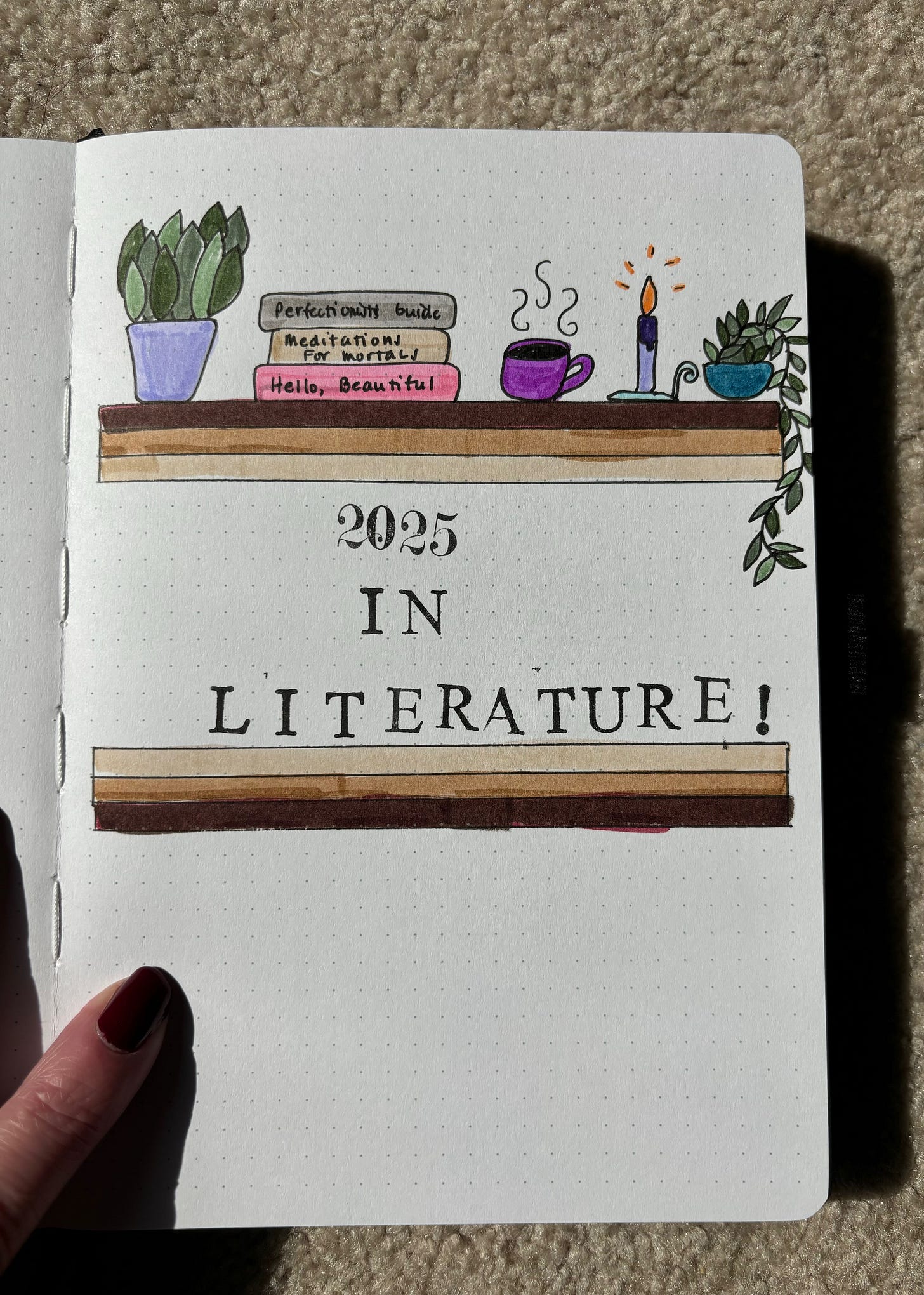
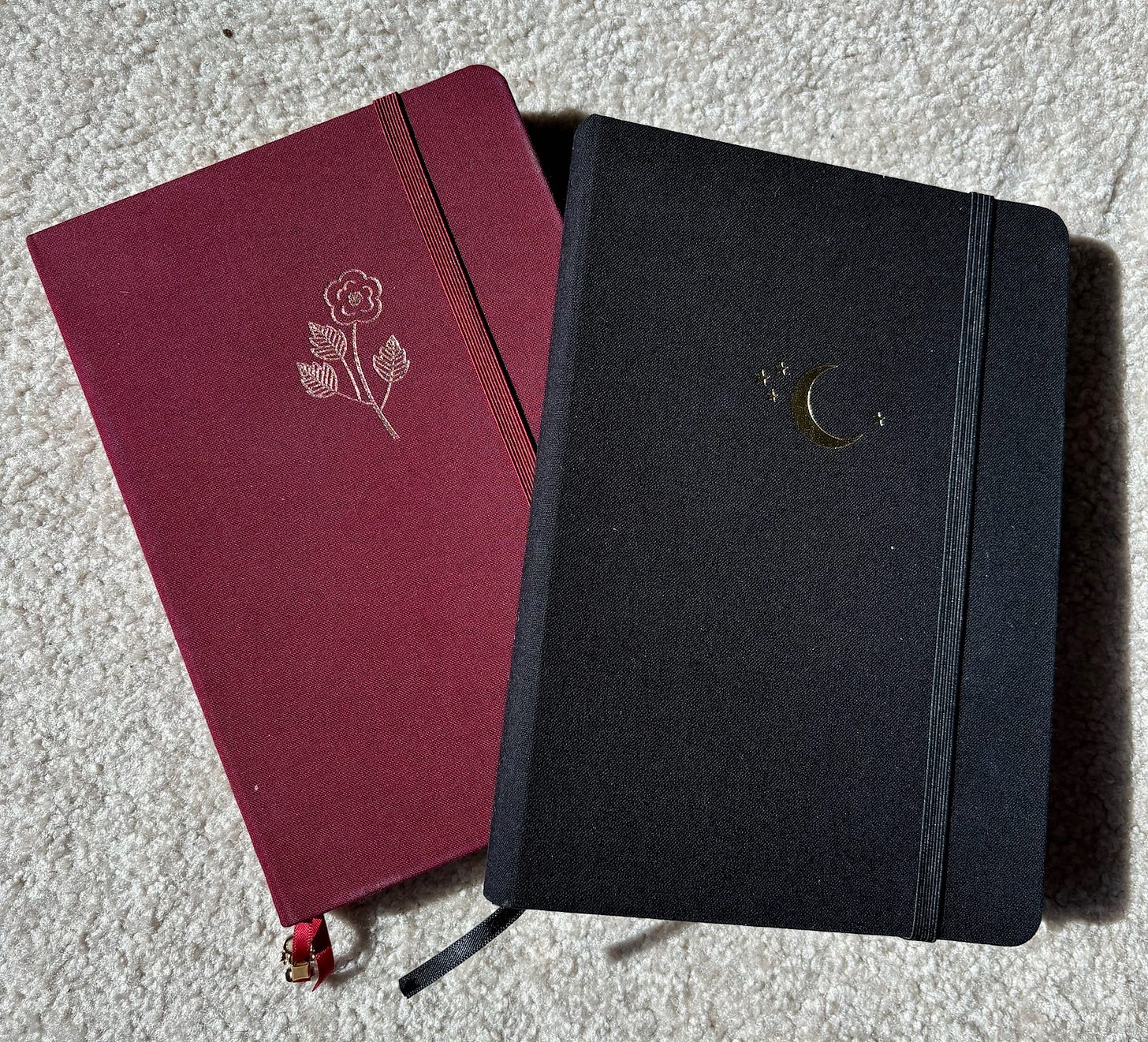
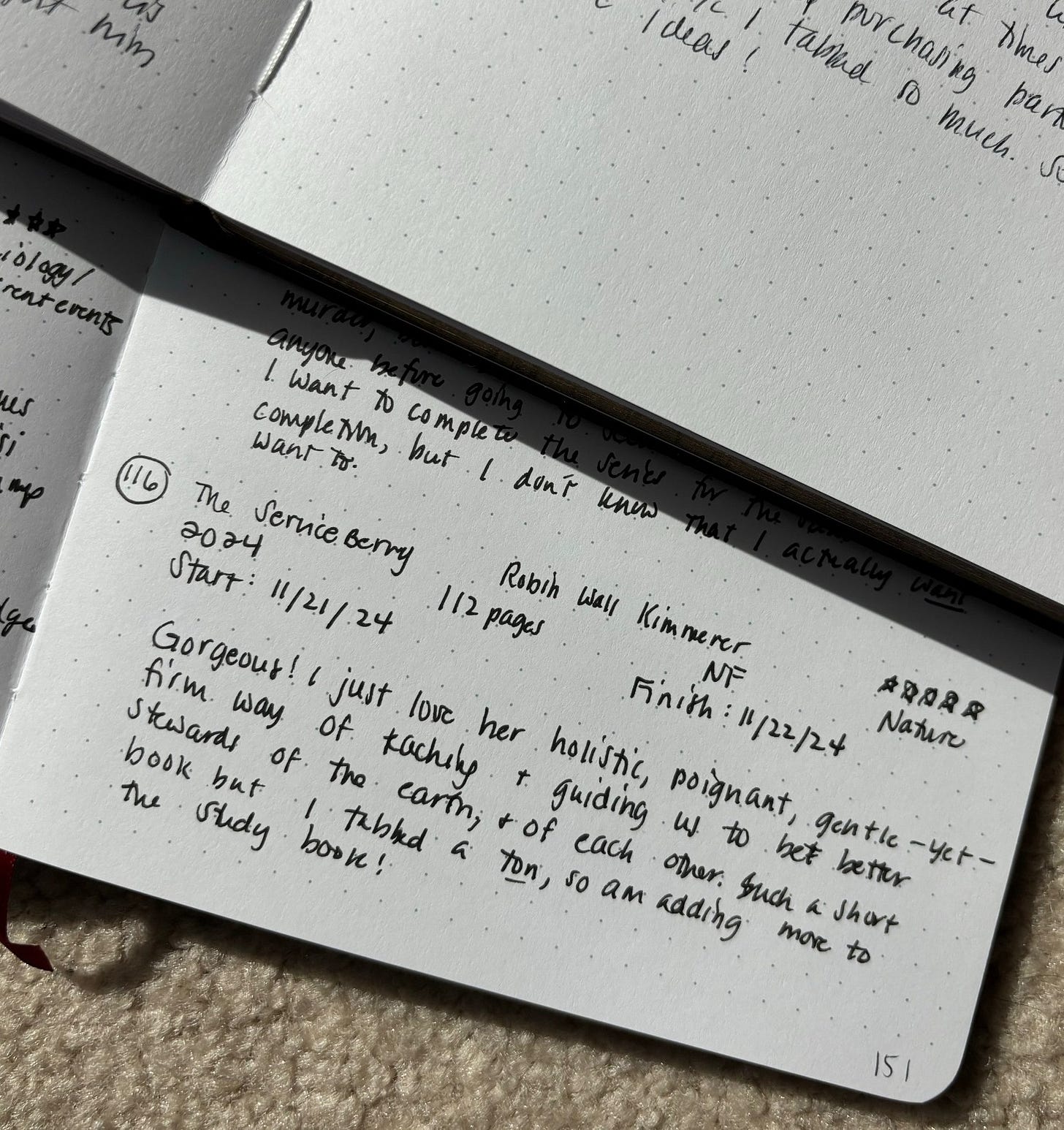
What a fun creatine outlet, thanks for sharing! I'd love to hear sometime about the reading/literacy orgs you're involved with.
I love your illustrated shelf! I have been keeping a book journal since 2017 and I, too, love looking back on it. Mine is not as visual, but i have gone back to add some stickers and washi tape. In the front of it, I also keep favorite bookish quotes and I have various lists of all time favorites. Each year I save 4 pages for my list of books and then after those I start my commonplace book of noted passages from the book. I tend to write small, but not all books get notes. What I haven’t done is be more reflective about my thoughts…I tend to do that in my regular journal. Over the years, my book journal has been a great resource to me to help remember what I have read. Thanks for sharing your process!